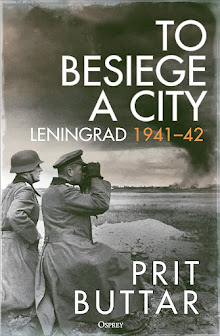Crete, whilst in Allied hands was a valuable air
base for raids on Axis targets in Southern Europe, or to support the Balkan Front. The Allied forces consisted of 30,000 British troops, 11,000 Greek
troops encumbered by 15,000 Italian prisoners of war. Hardware was scarce
with only 16 light tanks and 49 field guns. The core of the force was made up
of the 6th Australian Division and the 2nd NZ Division.
 |
| Operation Mercury - May 1941 |
Crete in Axis hands meant that the Allied bases in the eastern Mediterranean, and the
use of the Suez Canal, could be exposed to greater pressure from the Luftwaffe.
The attack by Fliegerkorps X1 and V111 would be the biggest German paratrooper
assault of the war. The two corps had at their disposal about 500 transport
aircrafts, 150-dive bombers, 180 fighters and 40 reconnaissance planes. There
were 22,750 men - 75 by glider, 10.000 by parachute, 5,000 by transport
aircraft and 7,000 by sea. The first attack was Maleme with a second at Rethimo
and Heraklion respectively.
 |
| Axis War Cemetery at Maleme |
The key to the success of the German "Operation Mercury" was the strategically important airfield at Maleme "Point 107" which overlooked it.
On
May 21st, the day after the initial assault the airfield fell and a British
counter attack was repulsed by the defending German paratroopers. Maleme
Airfield is now used by the Greek Airforce but it is possible to get a
panoramic view from the German cemetery which is located on top of a hill known
asPoint 107. The cemetery contains 4,466 fallen German servicemen.
 |
| Commonwealth War Graves at Suada Bay |
On May 24th, General Ringel organised his
forces for the main German attack. Withdrawal of the Allied 5th Brigade
allowed the completion of a defensive line from Staliana to Khania. After an
unsuccesful attack on the 25th May, the Germans eventually entered Perivolia
and Galaria. General Freyburg ordered the final withdrawal to Sfakia. The
Germans learnt of the proposed Allied evacuation and entered Chania on May
27th, gaining control of Suada Bay where there is now a stunningly situated
CWGC cemetery.
 |
| Youngest Casualty |
 |
| Trench Picket |
 |
| Oldest Casualty |
The British / Commonweath troops fought a last rearguard action north of the White Mountains during the final week of May and on the 28th the British evacuated Heraklion. Overnight on May 29th/30th the Allied rearguard maintained the Stafkia beach-head. The Rethimo garrison was obliged to surrender to the Germans and the last evacuations were made on the 31st May.
Battlefield walking in the sun can be hard work. For a more comfortable look at a WWII relic it is possible to hire a boat from Chania and snorkel over the decaying remnants of a ME110 which is 'belly up' on the sea floor a few hundred metres from land.
 |
| An ME110 'in the drink' |
This particular trip had a particular poignancy as the day we arrived, '9/11' unfolded. We were in a public bus and people started receiving texts. The first as I recall was that the "Pentagon has been bombed". The bus driver was listening to the commentary on a local football game. He wouldn't be persuaded to switch channels and so it wasn't until we got to a bar with TV that the awful scale of this disaster became apparent.



























